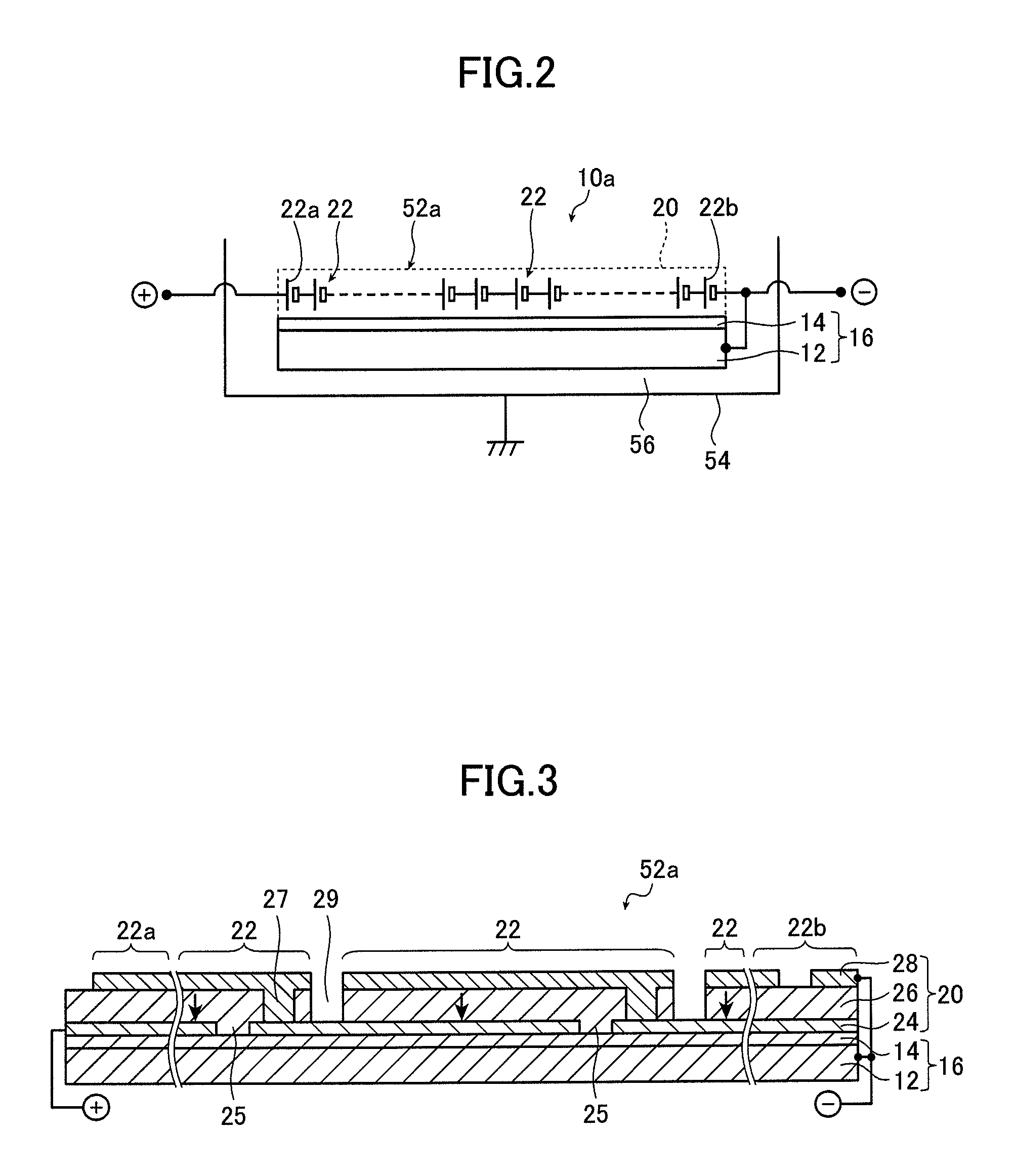Solar cell module and solar cell device
a solar cell and module technology, applied in the direction of photovoltaics, semiconductor devices, electrical devices, etc., can solve the problems of adversely affecting production properties, increasing manufacturing costs, limited use, etc., to reduce the voltage applied between the metal substrate and the outer frame of the module, and reduce the cost of the insulation material.
- Summary
- Abstract
- Description
- Claims
- Application Information
AI Technical Summary
Benefits of technology
Problems solved by technology
Method used
Image
Examples
Embodiment Construction
[0058]The solar cell module and solar cell device according to the present invention will be described in detail based upon the preferred embodiments and referring to the attached drawings.
[0059]FIGS. 1A through 1D are circuit diagrams respectively schematically illustrating an embodiment of the solar cell device of the present invention. Note that although the representative example of the metal substrate with an insulation layer described below uses a metal substrate with an insulation layer in which an anodized film is formed as an insulation film on at least one surface of an aluminum (Al) base, the present invention is by no means limited to this particular configuration, as shall be described below.
[0060]The solar cell device 50a shown in FIG. 1A has four solar cell modules (referred to simply as “modules” below) 10a of the present invention connected in series; the solar cell device 50b shown in FIG. 1B has four solar cell modules 10b of the present invention connected in ser...
PUM
 Login to View More
Login to View More Abstract
Description
Claims
Application Information
 Login to View More
Login to View More - R&D
- Intellectual Property
- Life Sciences
- Materials
- Tech Scout
- Unparalleled Data Quality
- Higher Quality Content
- 60% Fewer Hallucinations
Browse by: Latest US Patents, China's latest patents, Technical Efficacy Thesaurus, Application Domain, Technology Topic, Popular Technical Reports.
© 2025 PatSnap. All rights reserved.Legal|Privacy policy|Modern Slavery Act Transparency Statement|Sitemap|About US| Contact US: help@patsnap.com



